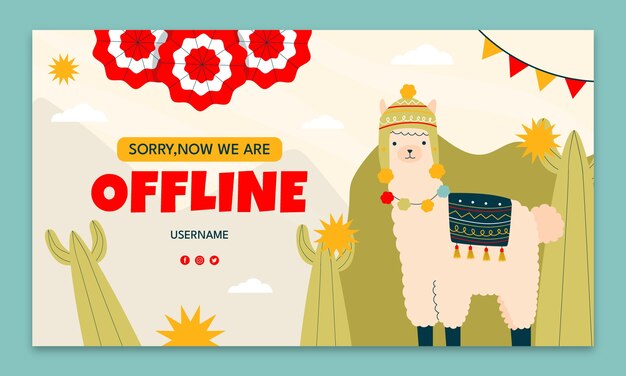

Sacagawea was a Shoshone Native American woman who played a crucial role as a translator and guide during the Lewis and Clark expedition.
Sacagawea’s name means Bird Woman in the Hidatsa language.
She was born in 1788 in what is now Idaho, and she died in 1812 in North Dakota.
Sacagawea was just a teenager when she joined the Lewis and Clark expedition, making her one of the youngest members.
She was chosen to be part of the expedition because of her knowledge of the land and her ability to communicate with various Native American tribes.
Sacagawea carried her infant son, Jean Baptiste, on her back throughout the entire journey.
During the expedition, Sacagawea helped identify edible plants and was skilled in finding medicinal herbs.
She helped the expedition negotiate with Native American tribes they encountered, preventing potential conflicts.
Sacagawea provided essential cultural and linguistic guidance to the expedition, helping them navigate unfamiliar territories.
She played a crucial role in establishing peaceful relations between the expedition and the Shoshone tribe.
Sacagawea’s image has appeared on U.S. dollar coins since 2000, making her the first Native American woman to be depicted on U.S. currency.
There are numerous statues and monuments dedicated to Sacagawea throughout the United States.
Sacagawea’s story has inspired numerous works of literature, including novels and children’s books.
She has been portrayed in several films and documentaries, highlighting her important role in American history.
Sacagawea’s legacy has had a significant impact on recognizing the contributions of Native Americans in early American exploration.
The exact details of Sacagawea’s later life and death remain unknown, leading to various theories and speculation.
Sacagawea’s journey with Lewis and Clark is considered one of the most significant exploration expeditions in American history.
Her bravery and resourcefulness have made her an enduring symbol of Native American heroism.
Sacagawea’s ability to navigate unfamiliar territories without maps or modern technology is a testament to her skills and intelligence.
She forged a path for future generations of Native Americans to have their stories and contributions recognized.
Sacagawea’s story serves as a reminder of the diverse cultures and peoples that played a part in shaping America’s history.
Her role as a bridge between Native American tribes and European explorers highlights the importance of cultural understanding and collaboration.
Despite facing numerous challenges and hardships, Sacagawea remained resilient and determined.
Sacagawea’s presence on the Lewis and Clark expedition challenged traditional gender roles and notions of who could be a valuable member of an exploration team.
The inclusion of Sacagawea on the expedition illustrated the importance of Native American knowledge and expertise in exploring the uncharted West.
Sacagawea’s contributions to the success of the expedition were acknowledged and valued by members of the Lewis and Clark team.
Sacagawea’s skills in foraging and hunting helped supplement the expedition’s food supplies during difficult periods.
Sacagawea’s bilingualism and language skills enabled the expedition to communicate with various tribes along the way.
Her determination and resilience in the face of adversity have made Sacagawea an inspirational figure for many.
The story of Sacagawea reminds us of the complex and intertwined history between Native Americans and the United States.
Sacagawea’s commitment to her role on the expedition and dedication to helping others continue to inspire people today.
Despite being depicted as a silent figure in historical accounts, Sacagawea’s contributions were invaluable in the expedition’s success.
Sacagawea’s impact on American history extends beyond the Lewis and Clark expedition, as her name and story have become well-known symbols of Native American contributions.
Sacagawea’s knowledge of the land and survival skills were crucial in ensuring the expedition’s safety and success.
Her presence on the expedition dispelled stereotypes about Native American women and their abilities.
Sacagawea’s bravery in facing the dangers and uncertainties of the journey demonstrates her indomitable spirit.
She overcame numerous physical challenges, including traversing treacherous terrains and enduring extreme weather conditions.
Sacagawea’s story sheds light on the often-underrepresented history of Native American women.
Her navigation skills were essential in determining the best routes for the expedition.
Sacagawea’s close relationship with Meriwether Lewis and William Clark fostered trust and effective communication between the explorers and Native American tribes.
She provided valuable insights into Native American customs and traditions, giving the expedition team a deeper understanding of the Indigenous cultures they encountered.
Sacagawea’s presence on the expedition challenged racial and cultural biases prevalent during that era.
Her story serves as a reminder of the importance of recognizing and honoring the contributions of marginalized communities in history.
Sacagawea’s journey with Lewis and Clark helped foster diplomatic relations between the United States and Native American tribes.
Her unwavering commitment to the expedition’s success and her unwavering spirit have cemented her place as an American icon.
Around the world, coffee enthusiasts enjoy Monin coffee concentrate since it is a multipurpose product. Conveniently combining…
The Importance of Choosing the Right Shower for Your Bathroom Renovating your bathroom can be…
Usain Bolt holds the record for the fastest 100-meter sprint in history.Bolt was named Sportsman…
Love is in the air... and it smells suspiciously like chocolate!Roses are red, violets are…
Life's a beach, take a picture and relax.Sun, sand, and salty kisses. That's what beach…
Hungary is home to the largest thermal water cave system in the world.The Rubik's Cube…